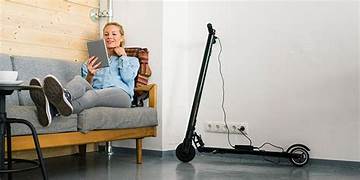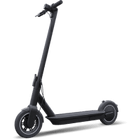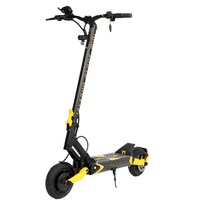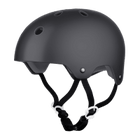Safe charging of lithium batteries at home

Safe E scooter charging at home
There has been some bad press about Lithium battery fires and electric scooters lately, but the truth is we are surrounded by lithium batteries. Every rechargeable device in the home will likely have a lithium ion cell in it. Laptops, phones, powertools, your kid’s night light… The truth is they rarely catch fire, and just as well as it seems they are here to stay.
In 2023 a number of news reports in NZ suggested that most e scooter and e bike fires are related to charging. Yet many people do not follow best practice when it comes to charging. Until I got into the e-scooter business by buying Freed Electric Scooters I had no idea myself what best practice was for safe charging of Li Ion batteries.
Even now I often forget to unplug my devices at home before sleeping. Yet unplugging them is the simplest way to prevent a fire.
My phone knows to slow charge itself at night to prevent overcharging but most battery devices are not that smart, including e scooters, so we need to make sure we unplug them ourselves to prevent overcharging.
Facts about Lithium Battery fires
- The Li ion fire is a chemical reaction that will continue until all the material is used. This makes them very difficult to put out.

- Lithium Ion batteries contain a liquid electrolyte that is flammable and very volatile if exposed to heat. Perversely, they can heat up themselves if damaged. A warm battery should be disposed of quickly even though most will discharge themselves harmlessly.

- Lithium fires start with lots of smoke. This can give people time to evacuate the area or quickly drag the item outside. The smoke is toxic and should be avoided.
So, how to prevent this damage and spot it if necessary?
Similar advice has been printed in the NZ Herald across a number of articles, however, the following is not intended to replace professional advice from a battery specialist.
Best Practice for charging all Li ion batteries: by Freed E Scooters

What to look out for around the house
Devices left plugged in. Rechargeable batteries should be unplugged once charging is complete.
Where are you charging? If it's in the living or sleeping spaces, charging should be monitored. Your house mates or family need to know they should not be leaving charging devices unattended. They need to be awake and in the room.
When are you charging? This is about the charging being monitored. You really should not leave devices charging while sleeping, especially large e-scooter and e-bike batteries.
While charging, check your devices for heat. Chargers can get very warm but should always be ok to touch.
Very large E-scooters. These have correspondingly large batteries and there is every temptation to charge these unattended and overnight. Yet big scooters tend to be ridden hard, increasing the potential for damage to fuses and wiring. Also, big scooters are expensive so many people will get the cheapest one. Cheap scooters catch fire more frequently. This was reported on by the BBC in 2023.
Correct Chargers. Always use the correct charger. Always, always, always. Using a different charger can be extremely risky. If you bought your scooter second hand, be certain you have the correct charger. If you are not sure, call us and ask.
Safe plug connections. Use multi boards with fuses. Or devices should be plugged directly into the wall socket.
Physical damage is something to look out for. Dropping a phone or crashing a scooter can damage the battery. Get your device checked if it shows signs of significant damage.
Water and electricity do not mix. Do not charge or store your e scooters outdoors. Water can get into cells, causing corrosion. Water is also a good conductor and can cause an electrical fire all by itself.
Lithium Ion batteries need to be recycled correctly. There are a number of companies that do this. Many waste recycling centres have drop off points also.
Batteries in storage. Unused batteries in garages should be checked for heat even if not plugged in or if unused. If it is hot, get it away from flammable items and dispose of it safely. Do not put it in the rubbish, get professional advice.
Best Practice Advice for E-scooters
- Store indoors
- Keep clean and dry. Don’t leave water sitting on the scooter.
- Monitor for signs of physical damage to chargers and devices
- Charge in a well ventilated area.
- Allow time after a ride for things to cool before plugging in to charge. Charging warm batteries can shorten their lifespan anyway.
- Avoid using any scooter at maximum speed for prolonged periods. Batteries have heat sensors built in and should shut down if they get too hot, however, damage to wiring could still occur
- Check your charger. Chargers can get pretty warm but never too hot. Excessive heat may indicate high levels of resistance.
- Store batteries in an area away from flammable items
- Recycle responsibly
- Monitor them regularly even if they are just sitting. If it's warm, swollen or visibly damaged, get rid of it.
- Damaged batteries are difficult to dispose of. Get professional advice.
Safe charging everyone. As always, you can call us for advice on 021498269.






